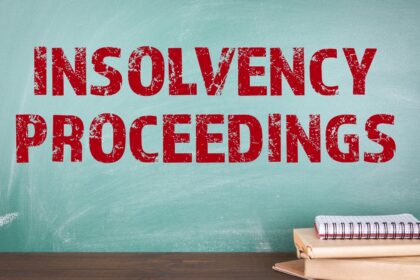
According to Law no. 85/2014, insolvency is defined as that state of the debtor’s patrimony which is characterized by the insufficiency of the funds available for the payment of certain, liquid and due debts.
When it goes bankrupt, a company has practically two options: reorganization and insolvency. However, few companies manage to reorganize, because they apply for insolvency when they already have no other financial alternative. The more chances of restructuring the company has, the earlier it submits the insolvency application.
Once a company is declared insolvent, it is important to do what is necessary to prevent the depreciation of assets and the depletion of cash. The ultimate goal of insolvency management is to ensure the return of as much money as possible to investors and creditors.
In any case, the importance of insolvency is extremely important in the business environment. The debtor is not only protected from possible foreclosures initiated by creditors, but, where necessary, the elimination from the market of debtors in an irremediably compromised situation is ensured, in order not to allow their state of insolvency to contaminate the environment business and lead to other bankruptcies, job losses and so on.
Ways to carry out insolvency proceedings
– the judicial reorganization procedure is that way of carrying out the insolvency procedure that is applied to the debtor, legal person, in order to pay his debts, respecting the debt payment schedule;
– the bankruptcy procedure is that insolvency procedure that is applied to the debtor in order to liquidate his assets to cover the liabilities, being followed by the deletion of the debtor from the register in which he is registered;
Participants in the insolvency proceedings:
– The court
– The tribunal
– Court of Appeal
– The judge
– Judicial administrator – compatible natural or legal person, insolvency practitioner, authorized under the law, appointed to exercise the duties provided by law during the observation period and during the reorganization procedure;
– The liquidator – the natural or legal person, insolvency practitioner, appointed to lead the debtor’s activity and to exercise the attributions provided by law within the bankruptcy procedure.
By the decision to initiate the simplified bankruptcy procedure, the court will order:
– Lifting the right of administration of the debtor;
– Appointing the liquidator and establishing his attributions;
– Handing over the management of the patrimony from the provisional administrator to the liquidator (at most 5 working days) with the documents provided by law;
– Notification of the initiation of the insolvency procedure and the entry of the debtor in the bankruptcy procedure.
Also, the insolvency procedure provided in Law 85 does not apply to:
– those who have liberal professions;
– those for whom special provisions regarding insolvency apply;
– pre-university and university education institutions;
– scientific research and technological development institutes that are part of the national research-development system.
Bankruptcy and Insolvency lawyer
The role of a lawyer in insolvency and bankruptcy is to reduce all the negative effects both for the insolvent society, but also for the clients or employees. In fact, a good lawyer in insolvency will analyze in detail the entire financial situation and will implement a strategy for solving the problems of the company, in order to ensure as much as possible the future of the company or, in other cases, the fulfillment of the interests of the shareholders or the stakeholders.
